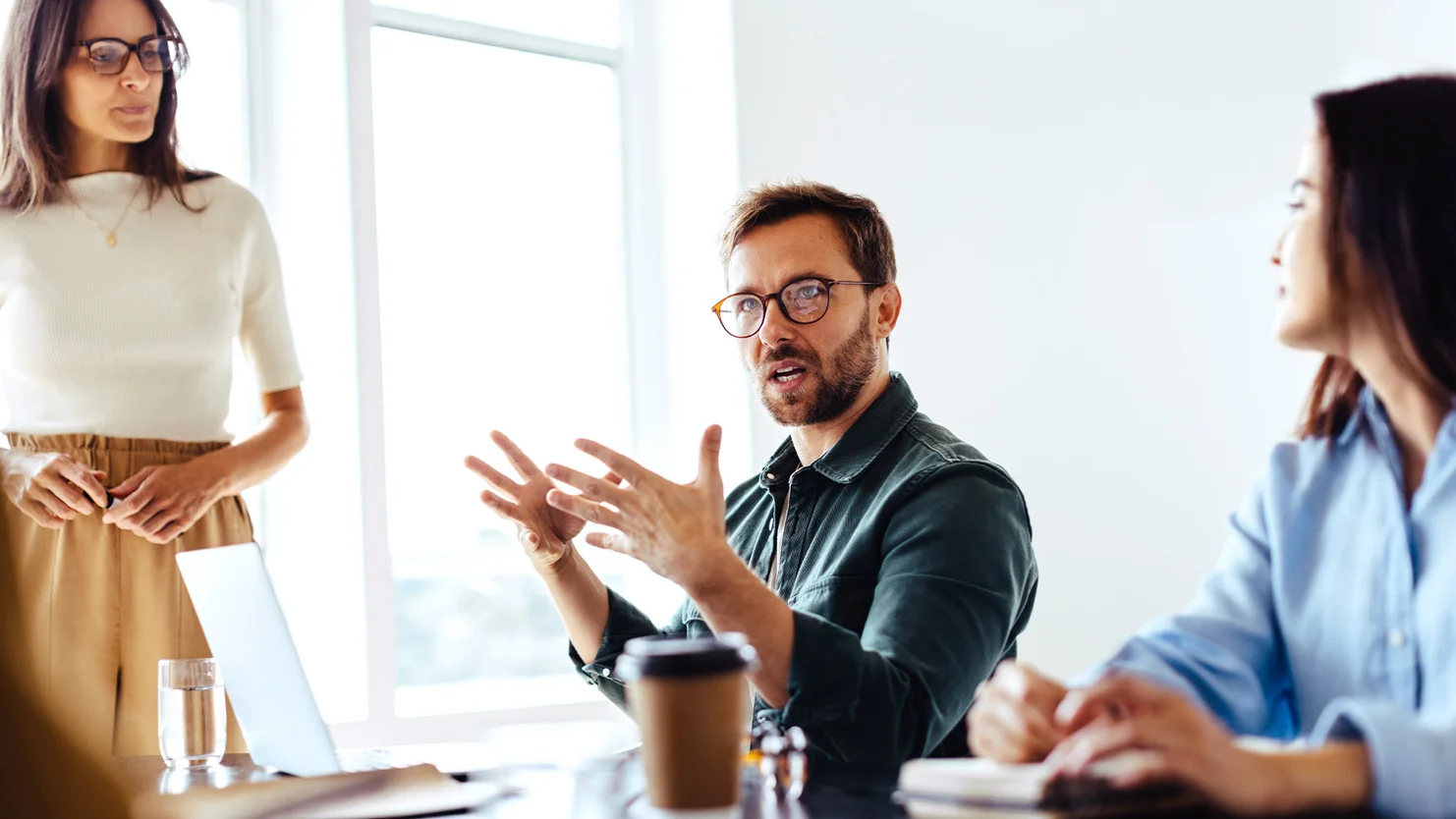As a technological partner, nventive’s role is to design, develop and evolve digital solutions as best as possible. The fact remains that your company keeps ownership of the project: we simply share the mission of creating your digital solution. The only possible variable is the co-creation process’s intensity, depending on your company’s structure, resources, and needs. To efficiently co-create a digital solution, we must apply a set of best practices to guarantee optimal fluidity between our teams.
Collaborate to Create an Efficient Digital Solution
This collaboration is a triple win formula: for you, for our experts, and for all the digital solution’s users.
To do so, each expertise must be exploited to its full potential: while you have the most complete and precise knowledge of the market and your industry, we on the other hand know what makes a good digital solution. Whether it be in the strategic approach, in product management, in technological knowledge, or in mastering agility, we complete your internal teams according to your needs.
‘‘We don’t take your teams’ place, but we bring the necessary skills to create an efficient digital solution.’’ specifies Gabrielle Garand, Product Owner Team Manager.
Working Together on Product Vision
To efficiently co-create, it’s important to co-define the product vision on several levels.
‘‘Right at the start of discussions, our teams get inspiration from the objectives that gave the initial idea. We synthesize your product vision and our role is to take it to the next level: we will make it reliable, solid, while also adding crucial elements to it, like strategic or technological choices, so that the vision becomes clearer and more thoughtful.‘’ – David Alexandre Hamel, vice-president of client experience, strategy and design.
During the research and discovery workshops, we will make sure we understand as much as possible the sector, objectives, and business dynamics, as well as the users’ needs and the technological environment.
We must also understand investment capabilities, operational means and, in the end, what you are able to do.
Then comes the in-depth work of understanding the features. This is when our knowledge of digital solutions comes in handy. Indeed, even if our clients evolve in different markets and industries, we can identify trends or questions that always arise from one project to the next.
By addressing them as quickly as possible, we can structure them in a viable and sustainable way, therefore minimizing the risks.
Finally, we absolutely have to align with the project’s success factors: we must understand the criteria of success, the key performance indicators, and the metrics associated with the project, whether they be internal or extracted from analytics. Indeed, depending on the project, the objectives can greatly vary from one to the next.

Defining the Collaboration and Validation Methods
- Define the main go-to people and to understand their role in the organization, for each side;
- Target the counterparts for each expertise: Indeed, there can be a product owner in the client company and another at nventive. Even if they share their title, their role in the project is very different: in the client company, they are responsible for the product expertise. At nventive, they are responsible for the digital expertise and for materializing the common vision with the scrum team. The two parties must find a way to complete one another.
- Talk the same language: Each collaborator must ensure they have the necessary knowledge to be comfortable in the project. For example, on our end, this means being able to explain key elements in digital development such as agility, technologies, user experience and interface design, and the tools used. On your end, you must let us know your objectives, your users’ needs, and your knowledge of the industry.
- Be transparent and ensure availability to guarantee the project’s efficient progress.
Guaranteeing Quality Project Management
Quality co-creation rhymes with quality product management.
The first step is to collaborate on prioritization efforts: our project managers become protectors of your priorities’ equilibrium. There are usually three types of priorities:
- Budgets and costs: You have a fixed budget that can’t be exceeded. Therefore, each new demand will result in reprioritizing the other elements – including the deadline and the scale – to ensure the budget is respected.
- Timeline: You have a definite launch date influenced by an important event, for example. Therefore, the priority will be to finish the project in due course. Demands and added features will consequently have to be sequenced in phases to guarantee a minimum viable product (MVP) deliverable on the desired date.
- Scale: It will determine the deliverable project’s magnitude and quality. That way, the more the scale increases, the more the project will require time and costs.
Thus, project management is the capacity of balancing each of these elements that necessarily impact the others. By agreeing with us beforehand on priorities, you are guaranteeing the project’s success and our recommendations’ relevance.
Project management also includes risk management: ‘’In the digital environment universe, there are a lot of variables and unforeseen events that couldn’t have been planned at the beginning, which is normal. Consequently, we ensure that our partners are aware of this and that they can react accordingly.’’ – Mohamed Rebai, project management office manager.






